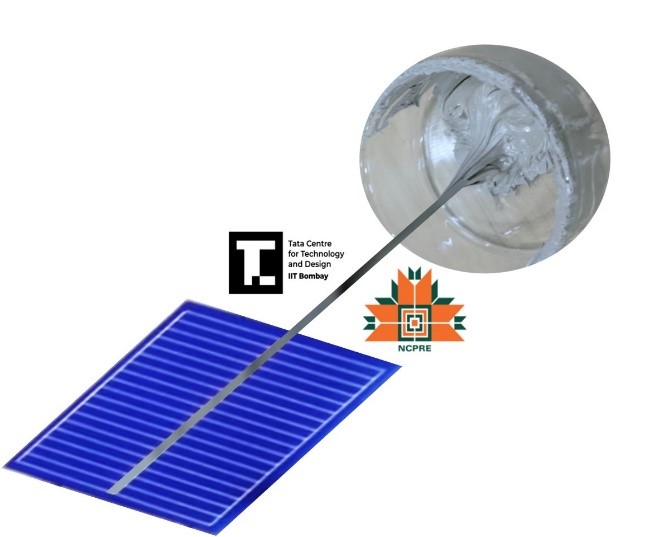


With the rapidly increasing solar PV installations in the country, it is expected that within the next several years, solar PV will become a significant contributor to India’s power requirements. Atmanirbhar Bharat Abhiyan is providing a significant push to developing raw materials and components within the country. In line with the Abhiyan, we have been working towards the development of PV grade silver paste used in the manufacturing of silicon solar cells. At the present solar cell production output, India imports around 50 tons/year of silver paste worth around INR 500 – 700 Crores per year.
Besides silver powder, the silver paste typically contains organic additives to make
it screen printable and a
customized glass powder in minor amounts which helps to etch the silicon nitride
anti-reflection coating
(ARC) during firing at elevated temperatures. The nature and amount of organic
additives have to be highly
customized to achieve a flow behaviour (rheology of paste) such that current
collection grid lines of fine
width can be printed on the ARC deposited silicon wafer. Etching the ARC layer, the
glass powder also plays
a crucial role in precipitating fine silver particles at the interface of the wafer
and paste to develop the
desired electrical contact.
Utilizing our experience in materials synthesis and designing of the flow behaviour
of slurries and pastes,
we initiated the work on the development of silver pastes. In the past 2-3 years, we
have developed our
silver powders, glass powder of suitable composition and formulated screen printable
pastes. The NCPRE
facilities were utilized to screen print as well as fire the wafers in both batch
and continuous furnace to
fabricate the solar cells. Till date, the best performing cells with our paste
yielded 15% photo-conversion
efficiency. Efforts are currently underway to establish the silver paste composition
for the presently most
popular industrial configuration of mono-crystalline p-type silicon wafers for
Al-BSF and PERC architecture.
Once pastes with superior repeatable performance are obtained, the knowledge would
be applied to
develop pastes for the emerging n-type silicon wafers solar cell technologies such
as the HJT TOPCon
followed by bifacial architectures also. We would be happy to receive any inputs
from the industry towards
the work being carried out on paste development and at a suitable time also seek
their assistance in the
evaluation of the pastes.




